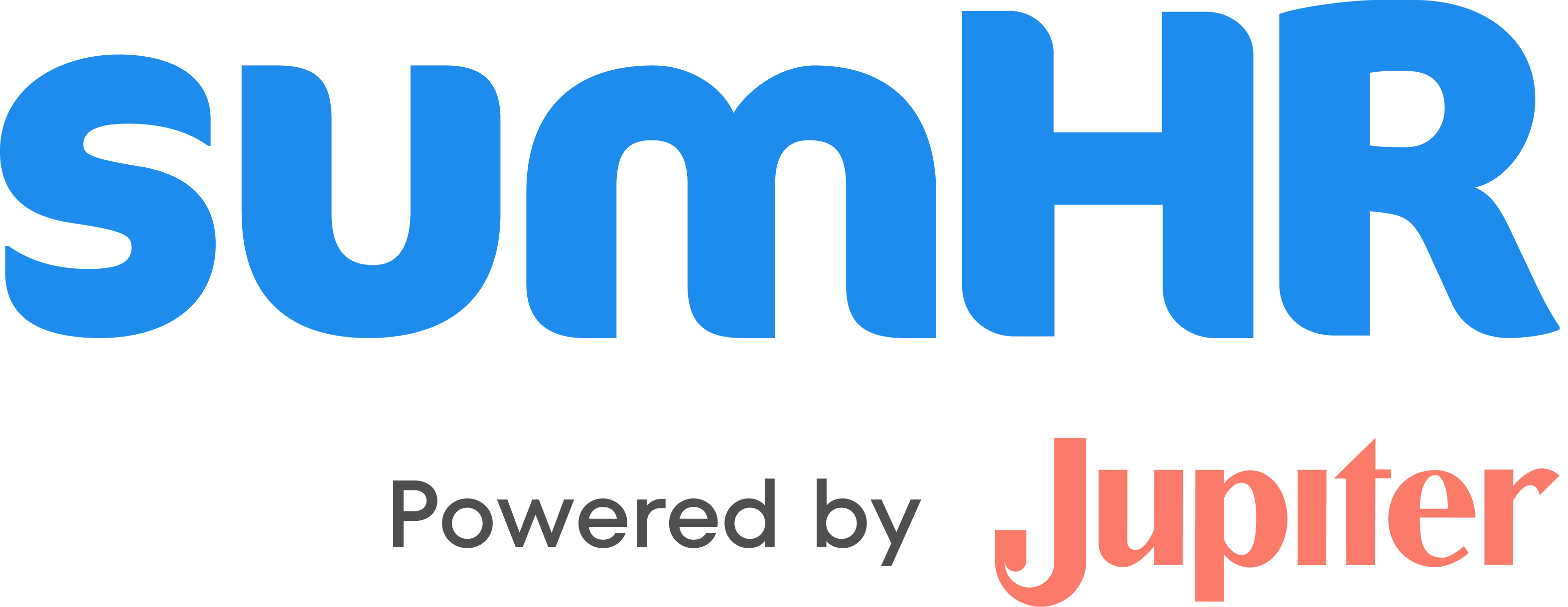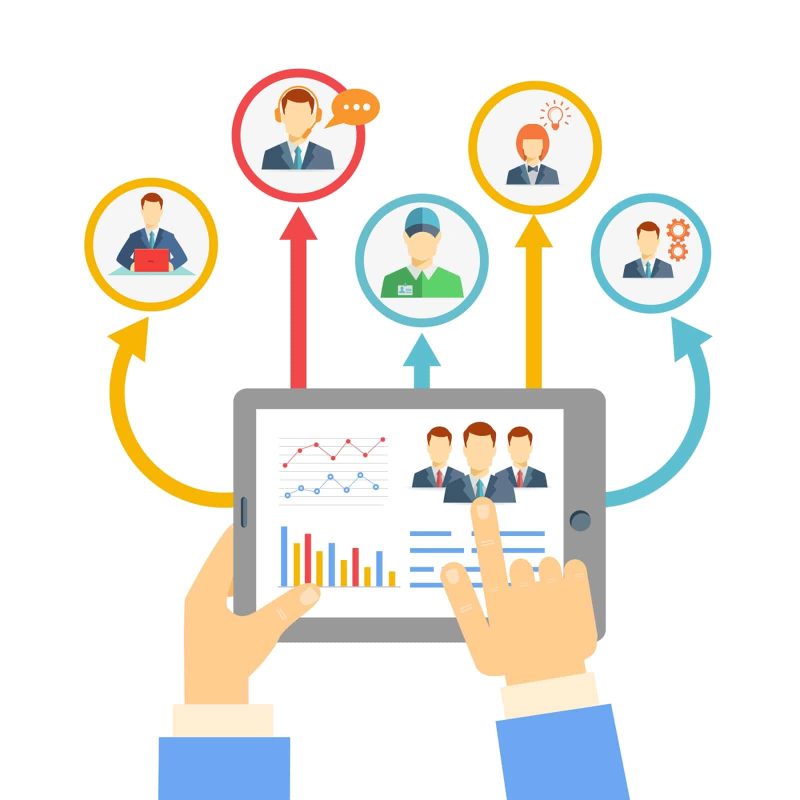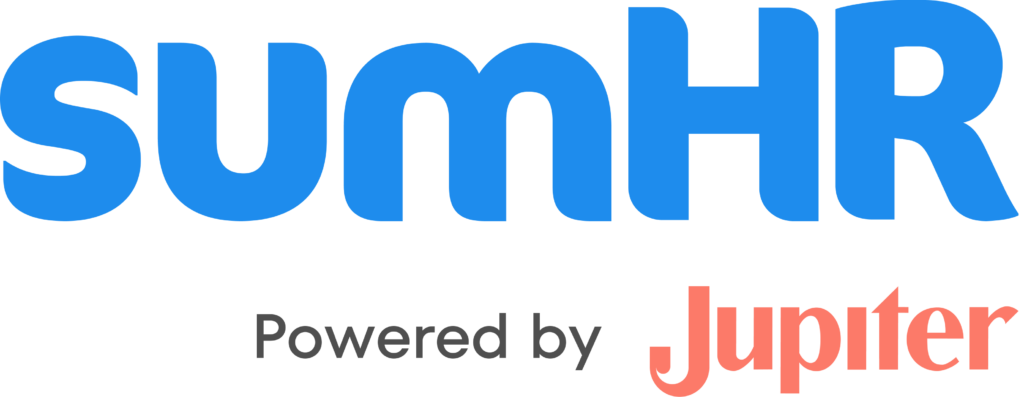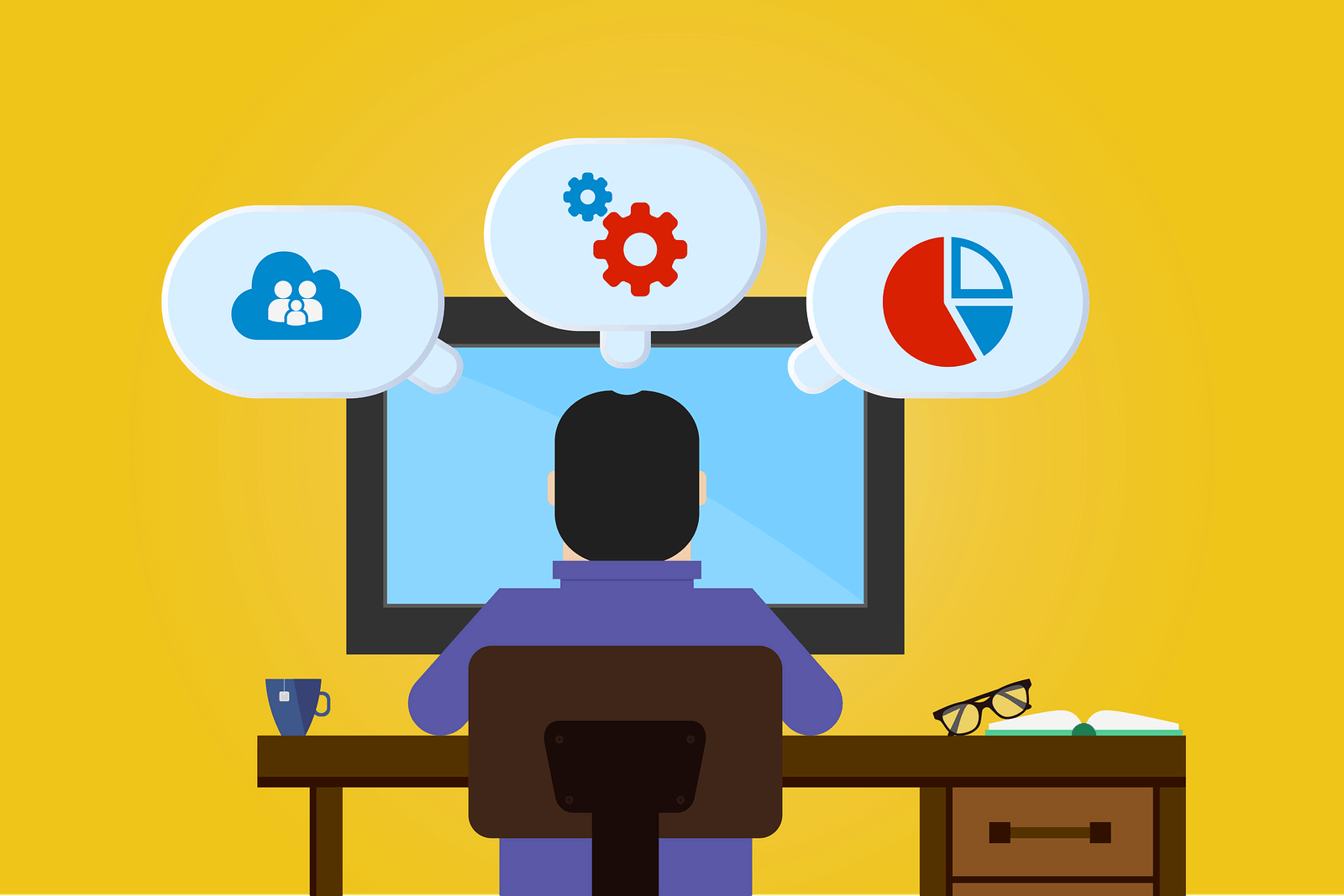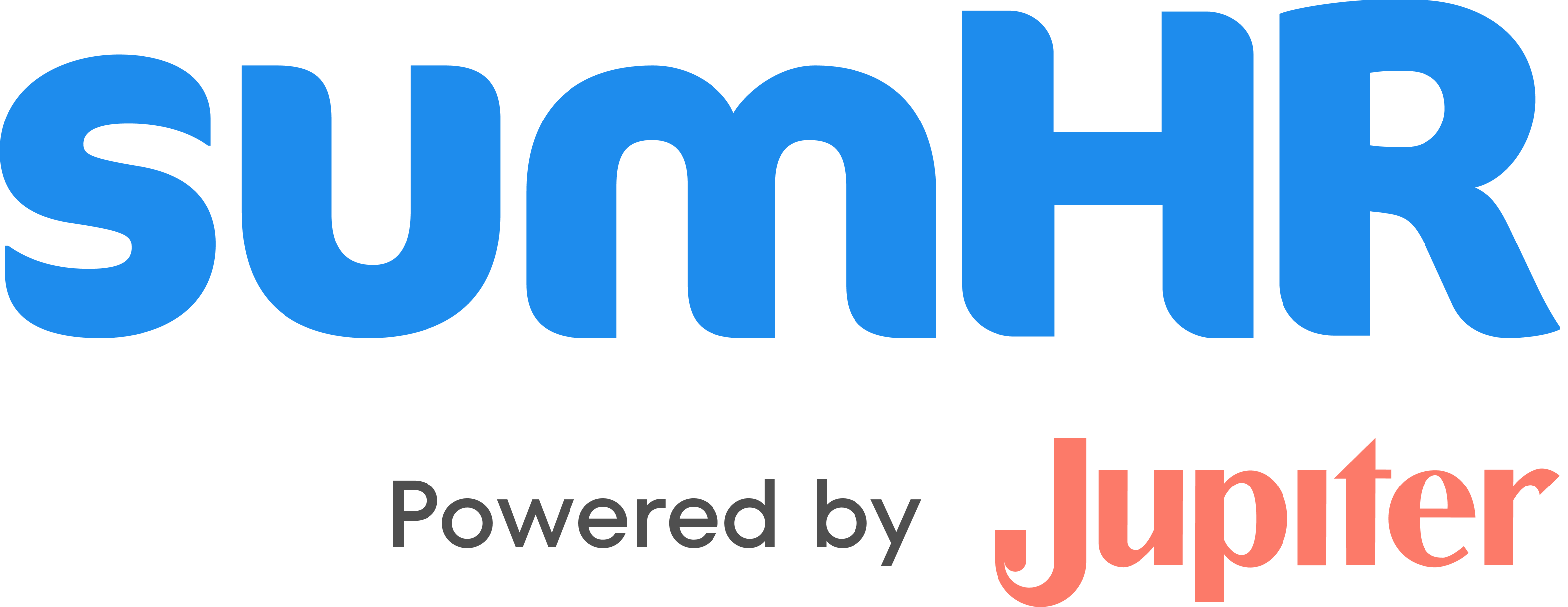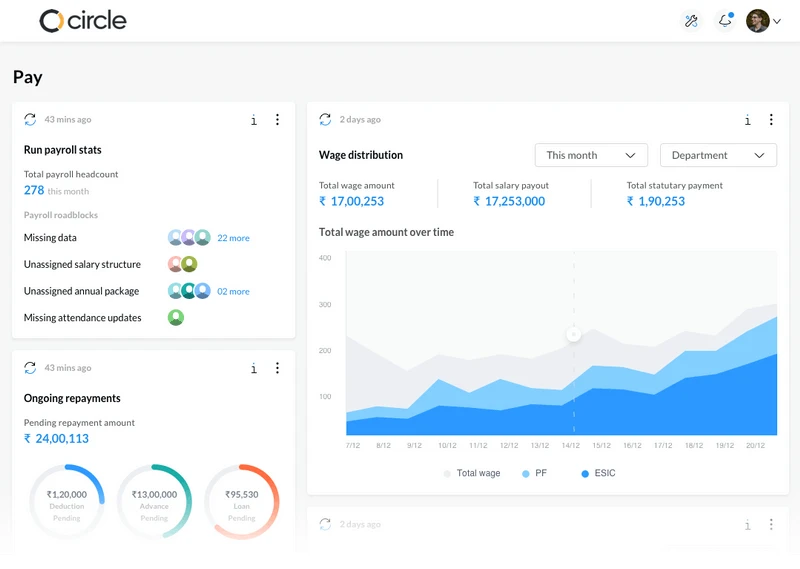As a business expands in this modern organizational setup, it starts facing issues related to workflow optimization, scaling, and hiring process automation that require immediate attention from the administrators. Furthermore, handling a company’s human resources processes becomes more problematic as the number of employees increases.
So, to better manage all day-to-day HR (Human Resource) tasks and payroll and personnel requirements, companies and HR managers must leverage an HRMS (Human Resource Management Software). This HRMS along with HRIS (Human Resources Information System) can help recruiting managers facilitate and streamline all their basic HR activities.
2. What is an HRMS (Human Resource Management System)?
In modern times, Human Resource operations have become more complex than earlier. In addition, there is so much that goes into employee data management, right from recruiting to hiring and training, and more nowadays.
The significance and modern workforce behind these jobs make it essential for human resources specialists to have an HR Management Software (HRMS) for the more efficient administration of HR data. Therefore, modern organizations are now using an HRMS (Human Resource Management System) — a combination of business processes and systems that combine information technology and human resource management information system through HR software.
An HRMS (Human Resource Management Software) assists HR managers in payroll management, leave approval, candidate recruiting, succession planning, career progression, attendance records tracking, performance reviews, and the overall supervision of the crucial employee database in their company.
The automation of redundant and time-consuming duties associated with human resources management frees up some of the business’s most beneficial employees. It allows HR managers to shift their focus to retention, culture, and other highly impactful areas.
3. Benefits of HRMS (Human Resource Management Software)
An HRMS (Human Resource Management Software) can help small and large corporations boost their growth and productivity. Substituting specific procedures with different levels of HRMS user interface (Human Resource Management Software) systems can distribute data management accountability so that the bulk of data gathering never gets delegated strictly to HR managers. Some of the top benefits of HRMS (Human Resource Management Software) are as follows:
3.1. Managing routine HR tasks
In many organizations, the HR (Human Resource) division usually faces a dilemma of improving the overall work atmosphere for employees. However, most of the time, the HR managers spend a considerable amount of their time performing routine administrative tasks like processing employee data and responding to queries. So to handle these regular, time-consuming repetitive tasks, businesses can use a Human Resource Management System (HRMS) that offers them the following benefits to improve productivity.
- Reduces paperwork: A Human Resource Management System eliminates much of the paperwork and redundant tasks related to HR operations. Specifically, it regularizes procedures related to employee data (employment history, certifications, licenses, skills, education, performance, compensation information, and more), recruiting, changing wages, and more.
- Speeds up document creation process: An HRMS (Human Resource Management Software) helps HR leaders keep all employee information concentrated in one place and make any document fast based on this data. Also, with an HRMS, Human resource managers don’t need to skim through stacks of paper records to access employee ratings, stock strategies, or other papers.
- Saves time: Human Resource Management Software saves time by keeping all data in one secure location and streamlining every time-consuming task.
3.2. Monitors KPIs (Key Performance Indicators)
KPI (Key Performance Indicator) is a measurable value that indicates how effectively employees or a whole organization are accomplishing their company goals. Companies should measure only things that hold some significance, and Human Resource Management Software can automate these core HR functions. Also, the essential KPIs that HR managers can monitor with an HRMS are:
- Position duration: A worker’s productivity declines if they remain in the same position for an extended time. The primary job of an HRMS (Human Resource Management Software) is to scrutinize how long every worker stays in their job position and remind HR leaders when it is time to give them a promotion.
- Employee retention: The retention rate helps HR managers measure employee retention in their organization and implies job stability within the business. It costs a company considerably when an employee leaves and the organization needs to hire new candidates. An HRMS (Human Resource Management Software) assists HR leaders in monitoring the retention of talent and observing formal retention techniques that improve overall productivity.
- Absenteeism: This KPI denotes the number of days a worker was absent due to sick leave, delays, or other grounds. A Human Resource Management Software (HRMS) tracks attendance and time efficiently without errors.
- Time to accomplish goals: It estimates the efficiency of the team and how much time it requires for a worker to attain specific goals.
3.3. Handles employees efficiently
Decreasing redundant administrative jobs and automating some core functions within a business enhances overall efficiency. Most Human Resource Management Softwares make it effortless to centrally gather business data, automate enterprise workflows, and add visibility by employing graphs and charts. Some prominent characteristics that HR management software can offer to enhance employee administration and workflow are:
- Attendance and time management: This feature of Human Resource Management Software tracks workers’ job hours and ensures that employees get paid for overtime accurately. Without an HRMS, this data is challenging to monitor without skipping some details.
- Training managxement: With the help of an HRMS, Human Resource managers can better track and report instructor-led training courses and programs for employees. It systematizes training curriculums, grading, history, and programs for better employee record management.
- Payroll: Payroll mistakes can be the downfall of a business, so the payroll must be handled well. A Human Resource Management Software can compute paychecks, manage the pay schedule, and guarantee precision.
- Performance management: Generally, employee performance gets monitored for an extended time, with feedback provided once a year. However, it requires a lot of time and struggles to keep all this data about every worker. With some additional features of Human Resource Management Software, organizations can acquire 360-degree feedback in real-time.
Continuous recording of performance-related information is likely to impact worker performance positively. Furthermore, performance administration data can demonstrate more in-depth insights into payment, bonuses, planning professional purposes, and more.
3.4. Enhances employee self-service
Worker self-service is one of the most in-demand traits of modern Human Resource Management software as employees usually have complex queries regarding terms, prerequisites, salaries, leaves, and more. However, it can sometimes be challenging for the HR department to respond to these queries separately for hundreds of employees.
An automated HRMS delivers better worker self-service and improved employee fulfilment. With Human Resource Management Software, if an employee wants to review their available paid day off, sick leave, or permission to work remotely, they can manage it themselves. So we can say that Human Resource Management Software usually offers employees separate accounts where they can find any required data.
3.5. Offers better data security and privacy
Investing in an effective HRMS is a significant step toward ensuring employee data security. A company is accountable for guarding confidential employee data against getting misused and saving this data against external dangers. An HR management system assists in protecting private data both from unauthorized users and hackers by storing it using end-to-end encryption.
In addition, Human Resource Management Software comes with payroll functionality, delivering a safer way to process the salary by securing this kind of information with password authorization within internal hardware.
3.6. Decreases employee turnover
With decreased administrative jobs and more productivity, HR managers can concentrate more on value-added exercises and company objectives. Human Resource managers can even become more effective and provide adequate support for employees.
Leaders, too, can focus on their workforce’s career growth using data offered by an HRMS, such as information and trends on each employee’s prior and existing performance. All these enhance employee engagement, which can boost employee retention.
4. Understanding some cons of HRMS
While the pros of Human Resource Management Software always outweigh its cons, there are some downfalls of HRMS that are as follows:
4.1. Impersonal performance assessments
Appraisal outcomes should always reveal a clear picture and accomplish performance evaluation both subjectively and objectively. In the extended run, when administrators depend only on measurable information provided by the software, they may not spend the time to get to know workers on a personal level.
As a result, this may adversely affect your employee evaluation outcomes. Also, depending only on objective information may overlook the employee’s actions on taking the time to learn new job functions or the optimistic attitude that a worker has whenever confronted with adversity.
4.2. Technical glitches
Technical glitches are unavoidable when using the Human Resource Management software. It may affect significant business activities if employee information is inaccessible. Just picture not being able to complete payment calculation a day before the deadline!
5. Getting started with an HRMS (Human Resource Management Software)
If you think switching to an HRMS (Human Resource Management Software) is the need for your organization, keep the following points in mind to get started with HRMS seamlessly and improve your productivity.
5.1. Setting up best practices in payroll and HR
If you wish to develop industry-standard most promising practices or rebuild your current HR procedures and techniques, introducing a Human Resource Management Software brings in the same as it arrives pre-built with the most promising approaches integrated into the product.
In small and medium enterprises, formal guidelines and policies are usually missing in the payroll and HR space. Introducing Human Resource Management Software into the company carries the potential to bring discipline in these areas.
5.2. Understanding your requirement and cost Implications
Cloud-based Human Resource Management Software comes in different forms. Also, while the core characteristics may seem alike, the expertise in every domain and the user experience differs. Therefore, it becomes imperative to choose the HRMS ideal for your business by understanding your requirements.
In addition, you need to be very precise on the detailed modules and attributes you want to have a seamless transition. On the cost front, cloud-based HRMS, by its very nature, tends to be highly price-efficient compared to other alternatives such as desktop software available.
5.3. Employee self-service is essential for employee satisfaction
In a perfect world, no worker should have to run behind the Human Resource team to access their payment and other data. A cloud-based Human Resource Management System makes this possible. Employee access service is a data suite for the employees that gives them direct role-based access to their tax information, leave, payslips, employee attendance data, and more, and that too in real-time.
Also, such details enhance employee engagement and fulfilment levels as workers remain clear about the hows and whys of their earnings to their tax computation and leave balance, and more.
5.4. Integration with your existing software
It is further essential to consider direct integration with different payroll inputs like biometric or attendance systems. In addition, you might have information pouring into other software from the HRMS, and today many Human Resource Management Software provide excellent API integration for better HR operations.
6. What are some emerging trends in modern HRMS?
Human resource operations are now moving towards predictive analytics and administrative efficiency. Furthermore, the process is shifting from tactical to strategic Human resource management. Some of the latest trends in modern Human Resource Management Software are as follows:
6.1. Employee Experience
Tailored, curated experiences for particular career phases from employee onboarding to career growth are in trend today. E-learning has also become an experience, and there is a shift towards self-learning. E-learning is taking on the company’s new forms, such as training modules which are primarily tiny units of the data offered for employees on the move.
6.2. Artificial Intelligence
In modern times, more and more businesses are shifting towards AI (Artificial Intelligence) tools for forecasting the results of their employee-defined purposes like KRAs, KPIs, and more. In addition, employee training on the recent technology by using AI to comprehend the new technologies and demonstrate the advantages to the employees and improve adoption of the latest technology.
Final words
All in all, Human Resource Management Software is the recent paradigm of automation in the HR domain that is cost-effective and effortless to get up and running, HRMS helps companies improve productivity and efficiency and set up the foundations of corporate change.
Frequently Asked Questions (FAQs)
1. How to choose the perfect HRMS for your company?
Choosing and executing the suitable HRMS for your business can make a considerable difference to the business’s success and expansion.
While it is feasible to take care of HR operations manually, an automated HRMS can assist in boosting productivity levels and can transform the way that your business serves customers in the contemporary marketplace. It is essential to remember that an HRMS is not one size fits all. So it is better to identify company needs and requirements and customer service requirements before choosing a Human Resource Management System.
2. What are the primary functions of HRM?
Human Resource Management (HRM) is a process in every company designed to improve employee performance by streamlining with the employer’s strategic goals. HRM (Human Resource Management) primarily concentrates on how individuals are managed within companies, focusing on strategies and approaches for a better employee development plan.
3. What Is an HRMS (Human Resource Management System)?
HRMS software assists companies in managing and automating their fundamental HR operations such as worker data storage, help management, attendance and time, and payroll. In addition, Human Resources Software delivers talent management abilities such as onboarding, recruiting, goal planning, performance management, compensation, job requisitions, learning and training, social security, attendance management and succession planning.
4. What is the full form of HRMS and how does it help?
The full form of HRMS is Human Resource Management Software and it assists managers in payroll management, leave approval, candidate recruiting, succession planning, built-in security, career progression, compensation planning, payroll process efficiency, performance appraisals, attendance tracking, applicant tracking, on-boarding process, document management and performance reviews.
5. What does HRIS mean and what are its core functions?
HRIS means Human Resource Information System and it helps HR managers handle their policies, human resource processes, and employee participation in general to offer a consistent user experience.
